Before the Dinosaurs
From the middle Carboniferous to the late Permian periods of the Paleozoic Era (about 320 to 260 million years ago), the Earth's climate seems to have been relatively cold. Traces have been found indicating that glaciers developed as far as the mid-latitudes (around the current position of Japan).
At the end of the Permian period of the Paleozoic Era, 250 million years ago, the collision of continents formed the Earth's only supercontinent (Pangaea).
The creation of vast inland areas far from the sea is known to have caused dry zones, especially deserts, to spread across the low latitudes (near the equator) of the Pangaea continent. It appears that seasonal temperature differences became more extreme.
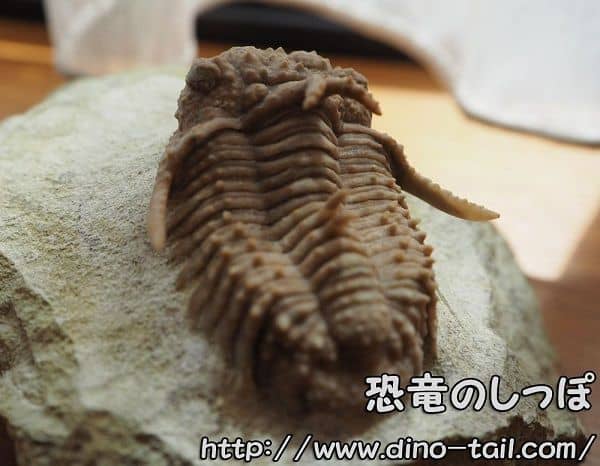
A trilobite that lived during the Ordovician period of the Paleozoic Era.
At the same time, an event occurred where over 90% of the species of living organisms on Earth became extinct.
It seems that large-scale volcanic activity threw up dust that blocked sunlight, causing a cooling period, followed by global warming due to the massive amounts of carbon dioxide released. Additionally, gases released during the volcanic activity reacted with oxygen, causing oxygen levels to decrease. It is known that the atmospheric oxygen concentration, which was around 30% from the late Carboniferous to the early Permian (about 299 to 280 million years ago), dropped to about 12% by the early Triassic (about 250 million years ago).
It is believed that the rapid changes in temperature and the drop in oxygen concentration caused this mass extinction.
At this time, trilobites, which had diversified into over 10,000 species and flourished during the Paleozoic Era, became extinct.
With the mass extinction, the Paleozoic Era ended, and the
Mesozoic Era—the Triassic Period
—began.
Organisms adapted to dry conditions would go on to expand their habitats.
The Appearance of Dinosaurs - Late Triassic
Dinosaurs appeared 230 million years ago, in a low-oxygen environment. This was about 4.4 billion years after the Earth was born.
Small, bipedal dinosaurs about 1 meter long, such as Eoraptor and Eodromaeus, have been discovered in present-day South America (Argentina). It is also known that the three main groups—sauropodomorphs, theropods, and ornithischians—existed from the early stages of dinosaur evolution.
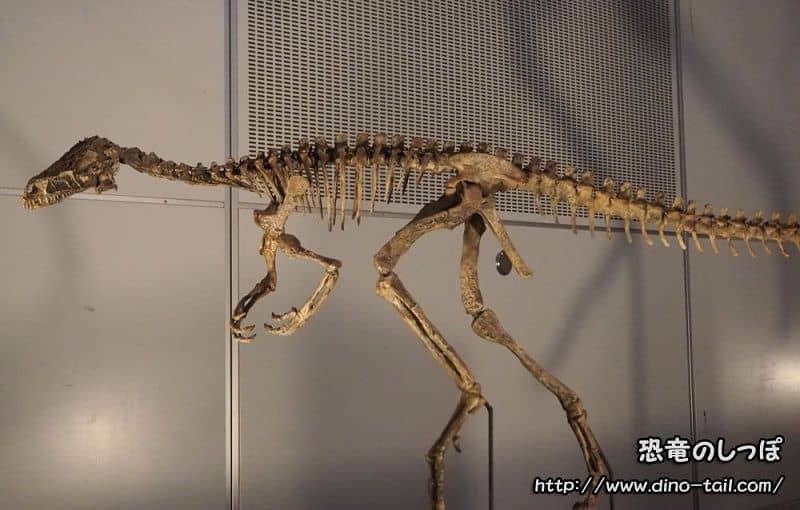
When the first dinosaurs appeared, they were small creatures. At that time, giant crocodile-line reptiles reigned as the kings of the land. In particular, some species of Rauisuchia exceeded 8 meters in length, making them no match for the 1-meter-long early dinosaurs. It seems that Late Triassic dinosaurs lived quietly in the shadow of these crocodile-line reptiles. However, this small size was the key to their survival into the next generation.
Another Mass Extinction and the Jurassic Period
208 million years ago, fragments of a comet struck a wide area of the Earth. Evidence of this has been confirmed in Canada and France.
Also, during this period, there seems to have been large-scale volcanic activity in the Central Atlantic Magmatic Province.
The comet fragments and volcanic activity caused many species to perish. It is believed that dinosaurs survived the extinction "because they were small." Their small size made them less susceptible to climate change, and their short lifespan and rapid reproduction—fast generation turnover—allowed them to quickly recover their population numbers. Most of the giant crocodile-line reptiles that were at the top of the food chain in the Triassic became extinct. This marked the end of the Triassic and the dawn of the Jurassic Period.
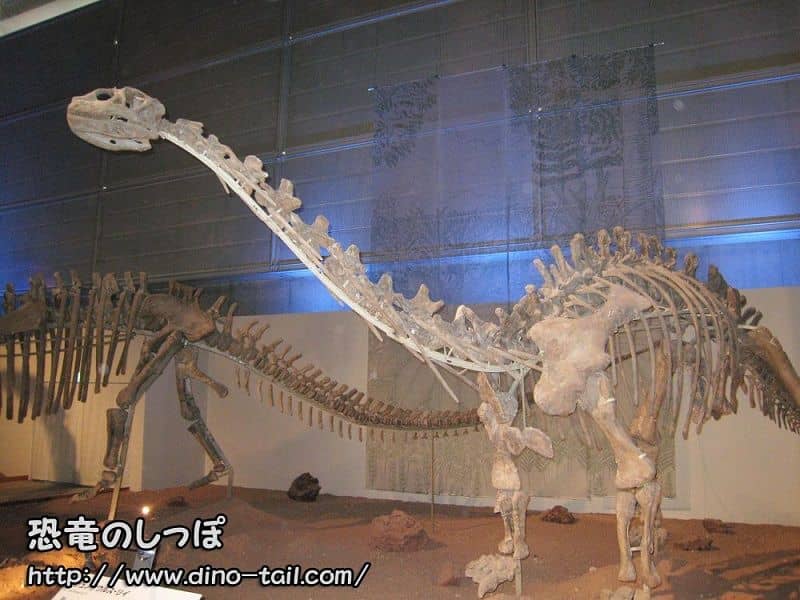
A sauropodomorph that flourished in the Middle Jurassic. It exceeded 10 meters in length.
The dinosaurs that remained on land rapidly diversified and grew larger during the [Early to Middle Jurassic] in a world without the fearsome crocodile-line reptiles.
Around this time, the single continent (Pangaea) also began to break apart. The northern continent
The separation of the continents and the formation of oceans between them seem to have made the seasons less extreme compared to the Triassic.
The carbon dioxide concentration in the Early to Middle Jurassic was about 10 times higher than today, and it is thought that the entire Earth was warm due to the greenhouse effect.

Feathered dinosaurs and primitive birds—like Archaeopteryx—also appeared in the Middle Jurassic (about 150 million years ago).
Representative dinosaurs of the Jurassic period include Stegosaurus, Allosaurus, and Diplodocus.
Into the Cretaceous: The Flourishing of Dinosaurs
145 million years ago, the era transitioned into the Cretaceous Period. The continents continued to split and move, and various dinosaurs evolved in different regions.
120 million years ago, a massive eruption from a large igneous province in the South Pacific caused a temporary state called an "oceanic anoxic event." This is considered a factor in the extinction of marine reptiles like ichthyosaurs and marine crocodiles. The oceanic anoxic event subsided after tens of thousands to a million years, and in the seas where ichthyosaurs had disappeared, plesiosaurs and mosasaurs began to flourish.
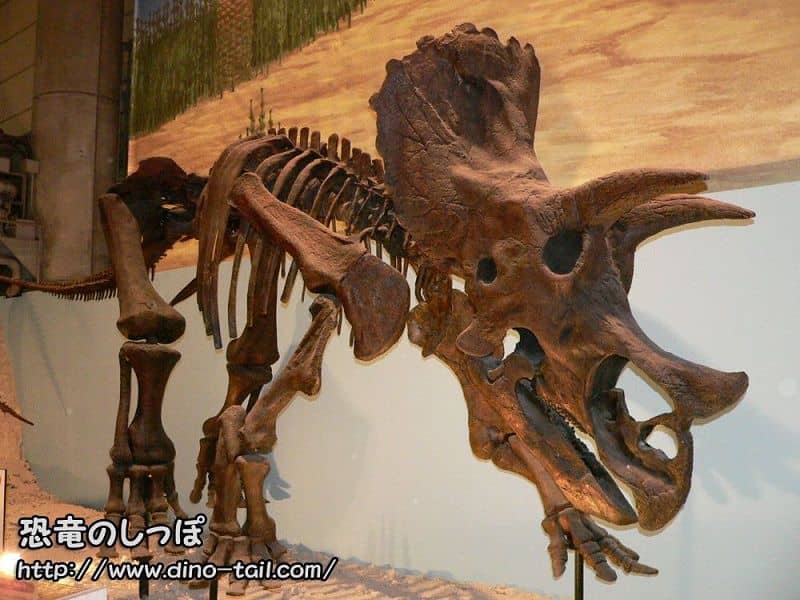
Plants were also evolving.
Until the Jurassic, there were only gymnosperms like ferns and conifers, but in the Cretaceous, angiosperms (flowering plants) that bear fruit appeared. Angiosperms are highly nutritious, allowing herbivorous animals to efficiently consume the necessary calories. The appearance of angiosperms spurred dinosaur evolution.
It was during this time that dinosaurs with distinctive features, such as ceratopsians and ankylosaurs, developed. Representative dinosaurs of the Cretaceous include Tyrannosaurus, Triceratops, Oviraptor, Spinosaurus, and Iguanodon.
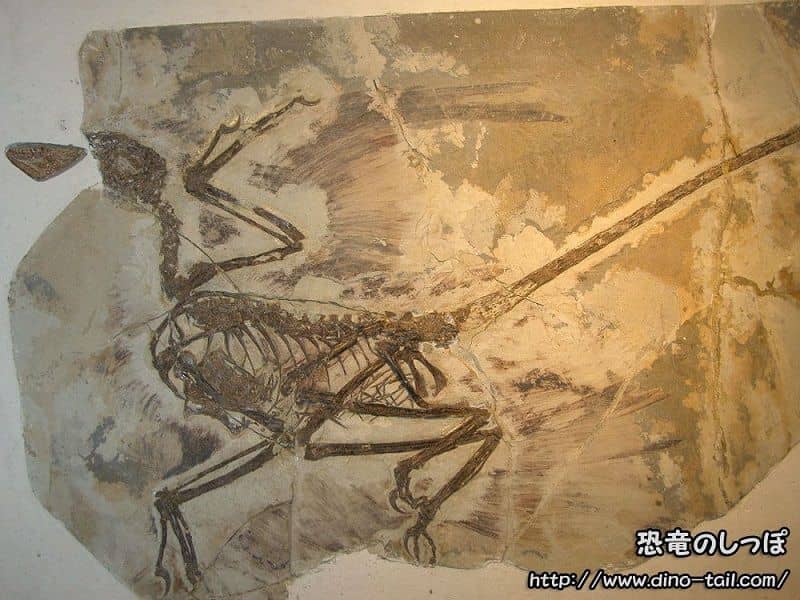
Traces of feathers are clearly visible on all four limbs.
And about 66 million years ago (*1), the dinosaurs disappeared. An asteroid impact off the coast of Mexico's Yucatán Peninsula and the resulting climate change are considered the direct causes of the extinction.
The Mesozoic Era ended, and the Cenozoic Era began. Some dinosaurs (theropods) had already evolved into birds with the ability to fly and have survived to the present day.
(*1) The boundary between the end of the Cretaceous (Mesozoic) and the Paleogene (Cenozoic) was formerly dated to "65.5 million years ago," but it was changed to "66.0 million years ago" in a 2013 announcement by the International Commission on Stratigraphy. This roughly corresponds to the result of a precise measurement of the asteroid impact timing by planetary scientist Professor Paul Renne in 2015—"about 66.04 million years (±30,000 years)."
In the Context of Earth's History
The 4.6-billion-year history of the Earth is represented by the bar scale in the diagram below.
Compared to that, the time of the dinosaurs seems like a recent event.

If we compare Earth's history to a single year (with Earth's birth on January 1st), it would look like this:
- March 5: Birth of single-celled organisms
- July 25: Birth of multicellular organisms
- November 22: Birth of fish with backbones (vertebrates)
- December 13: Birth of dinosaurs
- December 26: Extinction of dinosaurs
- December 31, around 2:00 PM: Birth of early humans
This is the scale we are talking about.
